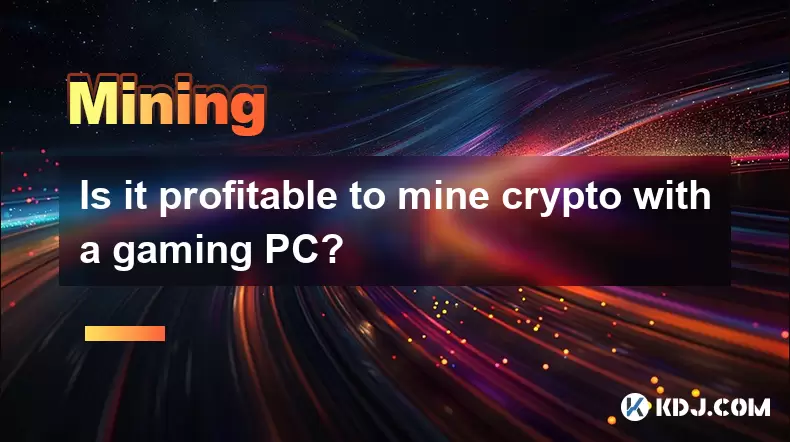-
 Bitcoin
Bitcoin $118000
-0.23% -
 Ethereum
Ethereum $3651
1.66% -
 XRP
XRP $3.423
-1.58% -
 Tether USDt
Tether USDt $1.001
-0.02% -
 BNB
BNB $742.8
0.69% -
 Solana
Solana $177.8
0.30% -
 USDC
USDC $0.9999
0.01% -
 Dogecoin
Dogecoin $0.2539
0.03% -
 TRON
TRON $0.3199
-1.74% -
 Cardano
Cardano $0.8382
0.59% -
 Hyperliquid
Hyperliquid $44.83
0.05% -
 Stellar
Stellar $0.4602
-1.49% -
 Sui
Sui $3.850
0.58% -
 Chainlink
Chainlink $18.62
2.56% -
 Hedera
Hedera $0.2681
0.97% -
 Avalanche
Avalanche $24.63
3.07% -
 Bitcoin Cash
Bitcoin Cash $522.5
0.96% -
 Shiba Inu
Shiba Inu $0.00001507
-0.80% -
 Litecoin
Litecoin $113.6
9.75% -
 UNUS SED LEO
UNUS SED LEO $8.994
0.24% -
 Toncoin
Toncoin $3.197
-0.43% -
 Polkadot
Polkadot $4.361
1.13% -
 Uniswap
Uniswap $10.45
1.41% -
 Monero
Monero $327.5
0.65% -
 Ethena USDe
Ethena USDe $1.001
-0.03% -
 Bitget Token
Bitget Token $4.992
-1.12% -
 Pepe
Pepe $0.00001355
0.67% -
 Dai
Dai $1.000
0.01% -
 Aave
Aave $322.6
0.15% -
 Bittensor
Bittensor $415.5
0.88%
Is it profitable to mine crypto with a gaming PC?
Mining cryptocurrency with a gaming PC is possible but comes with risks like hardware strain, reduced lifespan, and potential warranty issues, making it more suitable for experimentation than serious mining.
Jul 17, 2025 at 07:42 pm

Understanding the Basics of Crypto Mining
Crypto mining refers to the process of validating transactions on a blockchain network by solving complex mathematical problems using computational power. Miners are rewarded with cryptocurrency for their efforts. This process requires specialized hardware, such as GPUs (Graphics Processing Units) or ASICs (Application-Specific Integrated Circuits). A gaming PC typically comes equipped with a powerful GPU, which is why many users consider repurposing it for mining.
However, not all cryptocurrencies are mined in the same way. Some, like Bitcoin, require ASIC miners, while others, such as Ethereum, Monero, and Ravencoin, can be mined using GPUs. The profitability of mining depends heavily on the hash rate, power consumption, and electricity cost. Before attempting to mine crypto on a gaming PC, it’s essential to understand these variables and how they affect returns.
Hardware Considerations for Mining with a Gaming PC
Most modern gaming PCs come with dedicated GPUs from brands like NVIDIA or AMD. These cards are capable of handling the intensive computations required for mining. However, not all GPUs are created equal when it comes to mining efficiency. For example, an NVIDIA RTX 3060 Ti might offer a hash rate of around 60 MH/s for Ethereum mining, whereas an AMD RX 6700 XT could provide up to 58 MH/s with better power efficiency.
It’s also important to note that mining puts continuous strain on your hardware, especially the GPU and CPU. Unlike gaming, where usage is intermittent, mining runs your components at full capacity for extended periods. This can lead to overheating, reduced lifespan, and potential hardware failure if not managed properly. Proper cooling systems and regular maintenance become critical when running a gaming PC as a mining rig.
Calculating Profitability: Hash Rate vs Electricity Costs
To determine whether mining with a gaming PC is profitable, you need to compare the hash rate of your GPU against your local electricity costs. You can use online calculators such as those found on WhatToMine or NiceHash to estimate daily earnings. These tools factor in:
- Current cryptocurrency prices
- Mining difficulty
- Power consumption (in watts)
- Electricity cost per kilowatt-hour
For instance, if your GPU consumes 200 watts and your electricity rate is $0.10 per kWh, the daily power cost would be approximately $0.48. If the estimated daily mining income is only $1.50, after deducting power costs, your net profit would be around $1.02 per day. That may seem low, but over time, it can add up depending on market conditions and hardware performance.
Software Setup for Mining on a Gaming PC
To start mining, you’ll need to install mining software compatible with your GPU and chosen cryptocurrency. Popular options include:
- NiceHash Miner – Supports both NVIDIA and AMD GPUs and automatically selects the most profitable algorithm.
- Claymore’s Dual Miner – Often used for Ethereum mining.
- XMRig – Ideal for Monero mining on CPUs or GPUs.
Here’s how to set up basic mining:
- Download and install the appropriate mining software for your GPU and desired coin.
- Create a wallet address for the cryptocurrency you plan to mine.
- Configure the miner with your wallet address, mining pool server, and worker name.
- Launch the miner and monitor system temperatures and hashrate.
It’s crucial to ensure your drivers are updated and that you’re using the latest version of the mining software to avoid compatibility issues or performance bottlenecks.
Risks and Trade-offs of Using a Gaming PC for Mining
While mining with a gaming PC is technically feasible, there are several risks and trade-offs to consider:
- Reduced GPU lifespan: Continuous mining can degrade your graphics card faster than regular gaming.
- Warranty voidance: Many GPU manufacturers explicitly state that mining-related damage isn't covered under warranty.
- Performance impact: Mining uses significant system resources, which can interfere with gaming or other tasks if done simultaneously.
- Noise and heat: Mining increases fan activity and heat output, which may cause discomfort during prolonged use.
If you're planning to mine long-term, it's often more practical to build a dedicated mining rig rather than risk damaging your primary gaming machine. Additionally, some games or applications may experience crashes or graphical glitches due to mining processes competing for GPU resources.
Frequently Asked Questions
Q: Can I mine crypto while playing games on my gaming PC?
A: Technically, yes, but it's not recommended. Mining uses a large portion of your GPU and CPU resources, which can lead to reduced gaming performance, overheating, and potential system instability.
Q: Which cryptocurrency is best to mine with a gaming PC?
A: Cryptocurrencies like Ethereum, Monero, and Ravencoin are commonly mined with GPUs. Each has different mining algorithms and profitability metrics. Researching current market trends and mining difficulty is crucial before choosing one.
Q: Does mining slow down my PC?
A: Mining utilizes nearly all available GPU and CPU power, which can significantly slow down other processes. It can also increase disk usage and memory consumption, making multitasking less efficient.
Q: Is mining with a gaming PC worth it for beginners?
A: It depends on your goals. If you're looking to experiment or earn small amounts of cryptocurrency without investing in specialized hardware, it can be a learning experience. However, serious miners usually opt for dedicated rigs due to better scalability and longevity.
Disclaimer:info@kdj.com
The information provided is not trading advice. kdj.com does not assume any responsibility for any investments made based on the information provided in this article. Cryptocurrencies are highly volatile and it is highly recommended that you invest with caution after thorough research!
If you believe that the content used on this website infringes your copyright, please contact us immediately (info@kdj.com) and we will delete it promptly.
- Dogecoin Price, Institutions, and the 2025 Prediction: A NYC Perspective
- 2025-07-20 22:50:12
- Subway Surfers: Unlock Characters, Master Tips & Tricks for Endless Fun
- 2025-07-20 22:50:12
- Bitcoin, Whales, and Binance: Decoding Market Moves
- 2025-07-20 22:30:13
- Bangladesh vs. Pakistan: T20 Showdown and Shifting Sands in Crypto
- 2025-07-20 22:30:13
- Bitcoin, America, Awakening: A New Era of Crypto Confidence?
- 2025-07-20 22:55:13
- Crypto Coins, Undervalued Gems & Bull Run Potential: What You Need to Know, New Yorker Style
- 2025-07-20 20:30:12
Related knowledge

How are crypto mining profits taxed?
Jul 14,2025 at 12:28am
Understanding Cryptocurrency Mining and TaxationCryptocurrency mining involves validating transactions on a blockchain network and earning rewards in ...

How to keep a mining rig cool
Jul 12,2025 at 01:42pm
Understanding the Importance of Cooling in Mining RigsCryptocurrency mining is an intensive process that places heavy demand on hardware components, p...

How to mine crypto on a gaming PC
Jul 16,2025 at 12:00pm
What is Crypto Mining on a Gaming PC?Crypto mining involves using your computer's processing power to validate transactions on a blockchain network. A...

How to set up a crypto miner
Jul 16,2025 at 09:14am
Understanding Ethereum Gas Fees: What Are They and How Do They Work?Ethereum gas fees are a fundamental aspect of the network, representing the cost r...

Can you mine crypto on a laptop?
Jul 16,2025 at 02:21am
Is It Feasible to Mine Cryptocurrency on a Laptop?Mining cryptocurrency on a laptop is technically possible, but feasibility depends heavily on the ha...

Is crypto mining worth it?
Jul 16,2025 at 01:21am
Understanding the Basics of Crypto MiningCrypto mining refers to the process of validating transactions on a blockchain network by solving complex mat...

How are crypto mining profits taxed?
Jul 14,2025 at 12:28am
Understanding Cryptocurrency Mining and TaxationCryptocurrency mining involves validating transactions on a blockchain network and earning rewards in ...

How to keep a mining rig cool
Jul 12,2025 at 01:42pm
Understanding the Importance of Cooling in Mining RigsCryptocurrency mining is an intensive process that places heavy demand on hardware components, p...

How to mine crypto on a gaming PC
Jul 16,2025 at 12:00pm
What is Crypto Mining on a Gaming PC?Crypto mining involves using your computer's processing power to validate transactions on a blockchain network. A...

How to set up a crypto miner
Jul 16,2025 at 09:14am
Understanding Ethereum Gas Fees: What Are They and How Do They Work?Ethereum gas fees are a fundamental aspect of the network, representing the cost r...

Can you mine crypto on a laptop?
Jul 16,2025 at 02:21am
Is It Feasible to Mine Cryptocurrency on a Laptop?Mining cryptocurrency on a laptop is technically possible, but feasibility depends heavily on the ha...

Is crypto mining worth it?
Jul 16,2025 at 01:21am
Understanding the Basics of Crypto MiningCrypto mining refers to the process of validating transactions on a blockchain network by solving complex mat...
See all articles

























































































